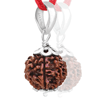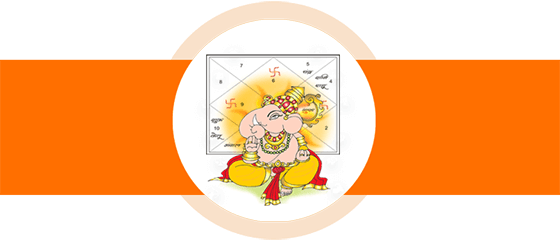Commodity Market 2020 Predictions
The Commodity Market, much like the Share Market trades in products, the difference being in the type of goods in question. Commodity Market deals in the primary economic sector, i.e., industries that are associated with the extraction and collection of natural resources. An approximate of 50 significant commodities can be broadly divided into two categories – hard and soft. Hard commodities are generally the natural resources that require mining, extraction, and similar process; whereas the soft commodities imply agricultural products, livestock, and so on. As an example, Gold, Silver, rubber, oil, etc. fall under the Hard Commodity section, while, grains, sugar, soybean, coffee, etc. are the soft commodities. AstroSage is here to offer you a look into the future of your shares in these industries. Below, you can learn a bit about the future of commodities on a month-by-month basis.
Let us take one industry at a time:

Gold-Silver Industries
This year, the Commodity Market 2020 for gold and silver industries indicate that the year will begin with inflation; however, it will come to an end with a recession and intermittent rise and falls of the commodity prices.
First Quarter
The first quarter of the year will begin with the inflation from the previous year spilling into this one as well. The position of Jupiter and Saturn in the zodiac sign Sagittarius during January will ensure that. Ten days into the first month, we will see a bilateral phase of the market, which can bring some deflation without any significant changes in the silver industries. The time around 25 January, however, can even bring a slight dullness in the Gold. Simultaneously, Rahu’s position in Gemini, in addition, a rising Jupiter in the East, will dull the shine of Silver as well. This will continue throughout the month of January, and in February as well. Afterwards, the Sun’s placement in the Dhanishta nakshatra near the end of the first week of February will bring some inflation in the shares of Silver.
Yet, this situation will not persist for long, and there will be bilateral undertones to the market. Near the end of the first fortnight, there will be some ups and downs in the jewellery market, whereas by 20 February, there will be a definite deflation in the commodities of the market while Gold will become stable. This decline will continue in the last month of the quarter as well, and near the end of the first week of March, Gold and Silver both will be seen weakening. The recession that hits the stands on 5 and 6 will continue till 15 March. Inflations may come and go intermittently, in between these dates. However, after the mid-month, there will be a rise in the prices of shares of Silver. Yet these inflations will come with some ups and downs, which will continue till the end of the first quarter of the year.
Second Quarter
Predictions for Commodity Market 2020, in the second quarter of the year, indicates a downtime. On the second day of the new month of April, there will be a fall in the price of the commodity Silver. This outlook will continue with some bilateral undertones as the deflation persists through the month, with some ups and downs. Near the end of the month, on the 28th, Gold will once again weaken. This trend will continue through most of the second quarter, and deflation in the commodity Gold will prevail throughout the entire month of May. The jewellery market (Sarafa bazaar) will move towards deflation at the beginning of June, and there will be a particular decline after 16. However, from 22 June, there will be inflation in the market, which will continue rising day by day.
Third Quarter
The third quarter of the year will begin on a positive note. As the new month of July begins, there will be a rise in the Sarafa Bazar. The shares of Silver will also see significant inflation from the beginning of the second half of the month. This growth will continue to grace the market until the end of July. However, with the commencement of August, Silver will once again find its shares dipping on the second day. The commodities will continue with a bilateral outlook – ups and downs will rule the jewellery market until 13 August. From 16, there will be a tremendous rise in the commodity of Silver, but it will suddenly decline on 19 August. From the next day, a recession will once again hit the jewellery market, but two days later, there will be sudden inflation in the commodity Gold. Once more, the jewellery market will move towards a rise in the third quarter of the year, with bilateral undertones, as the growth still comes with some highs and lows.
Fourth Quarter
The last quarter of the year will begin with a decline in the commodities Silver as well as Gold. Nevertheless, as the second half of October begins, the entire market will be bestowed with inflation on 16, which will continue until the end of the month. This trend will persist at the beginning of the month of November as well. However, on 8 November recession will once again hit the stands. Gold will suffer significantly, and despite the bilateral turn of the market, it will keep deflating until the month-end. The decline will spill over in the last month of the year too. Despite that, there will be a slight rise in the market during the middle of December, and by the 20th, the prices of Gold will further rise. The entire month of December will continue with some smattering of inflations.
Oil Seeds & Oil Cakes Industries
This year, the Commodity Market 2020 for oil seeds and oil cakes industries indicate that the year will begin with inflation, and despite the intermittent rise and falls of the commodity prices, it will face more highs than lows.
First Quarter
The first quarter of the year will begin with inflation in the commodities castor, peanuts, mustard, toriya (lahi), and sesame. On the last day of the first fortnight of January, shares of castor, mustard, and peanuts will face a dualistic phase as they move towards recession with some highs and lows intermittently. Despite that, there will also be a rise in the commodities of cottonseed this month. The deflation from the previous month will spill over into February and will be apparent in the commodities flaxseed, mustard, and peanuts as well by the end of its first week.
Along with flaxseed and mustard, the entire Commodity Market of oilseeds will also be well under the oppressive weight of recession. However, around 14 February, there will be a one-sided deflation in the commodities linseed and mustard, which will continue till 23 February. After that, although the decline will slow down slightly, yet, a recession will prevail.
Second Quarter
The second quarter of the year will begin with happy tidings for the oilseeds Commodity Market. The month of April will bring a wave of inflation in the castor commodities. This hike can be seen in mustard and peanuts as well, by 17 April. Predictions indicate that this graph will continue steadily in this way throughout the month. By 6 May, there will be some ups and downs in the commodity prices of linseed, castor, mustard, and peanuts. Things will further decline from 21 May, and this outlook will continue throughout the month, as per predictions. Quite the opposite to the previous month, the month of June will bring inflation in the prices of commodities castor, peanuts, and mustard, especially a significant one in the latter most. From 23 June, the entire oil seeds Commodity Market will face linear inflation in the prices. On the whole, the second quarter of the year will remain on the rise for the most part, with bilateral undertones.
Third Quarter
Predictions for Commodity Market 2020 indicates that the third quarter of the year will begin much like the previous one. The trend of the prior month will carry forward until 24 July. After that, the market will take a bilateral stance as the commodities continually move towards recession, despite intermittent ups and downs. Things will once again take a turn, as the month of August begins. From the second day, the entire oil seeds market will witness unilateral inflation, especially castor and sesame. This inflation will continue in the month of September as well, albeit at a slower pace. Although this inflation may seem to be rescinding from 19 September and the market will appear to move towards a decline, however, things will soon turn around.
Fourth Quarter
The inflation from the previous month, despite the bilateral undertones, will continue to prevail in the last quarter of the year as well. Throughout October and beginning of November, there will be a rise in the prices of oilseeds, albeit with some highs and lows. However, from 8 November, the market will once again dip and move towards recession, especially in the shares of commodity soybeans. The oilseeds market will steadily move towards recession, despite the intermittent ups and downs throughout November, till 15 December. Although there will be a slight rise in the commodities of oilseeds, however, things will turn for the better from 20 December. The year and its last quarter will come to an end with slight inflation in the market.
Click Here To Read: Stock Market 2020 Predictions
Jaggery, Khand, Sugar Industries
The predictions for sugar industries of Commodity Market 2020 will follow an almost steady phase of inflation. Although the intermittent deflation will be numerous and recurrent, however, on the whole, this year will bring a rise for the Jaggery, Khand, and Sugar industries.
First Quarter
Predictions indicate that the jaggery, Khand, sugar market will go through a spell of recession this year. The first quarter and the first month of the year will begin with a rise in the prices of commodities jaggery, khand, and sugar, things will take a bi-lateral turn from 6 January, and it will truly start declining from 10 January. However, everything will break the pattern on 24 January, after which the market will once again move towards inflation. This will continue until the end of the first week of February whence the sugar market can face some recession. The market will once again move towards inclination from 10 February, which will steadily rise. The trend will continue growing throughout February, and until the middle of March, at which point there will be a slight weakening of the commodities Khand, Sugar, and Jaggery.
Second Quarter
The Second Quarter of the year will begin weakly as the market may face some decline in the commodities. From 15 April, a recession will adequately hit the markets; nevertheless, things will improve from 27 April. The sugar market will once again move towards inflation after that. The month of May will also begin with the prices steadily on the rise; however, they will once again see a decline from 11 May. The Commodity Market will once again turn face on 25 May, and the environment will be that of inflation from then on. The trend will continue till 22 June, after which the market will begin moving towards deflation with bilateral undertones as ups and downs persist.
Third Quarter
The recession that hit the stands in the previous months will seep through in the third quarter of the year as well. Things will especially begin declining after 12 July, which will finally come to a halt on 22 July. After this, commodity prices will commence increasing, and the predictions indicate a period of inflation once again for jaggery, sugar, and khand industries. The rising values will continue on their path steadily, and pick up pace after 8 August. This rise will be a significant part of the third quarter of the year, as it will prevail through most of August and beginning of September as well. However, 10 September, will once again bring a decline in the Commodity Market 2020. This will continue for the entire month.
Fourth Quarter
The last quarter of the year will begin with a weak market moving towards inflation. 1 October will bring some bilateral undertones to this rise of the Commodity Market 2020. This will continue throughout the month of October, and in the first week of November, as the market steadily rises despite inevitable ups and downs. 7 November will bring a deflation in the commodities of sugar, jaggery, and khand; however, things will take another turn on 20 November and move towards an increase once again. This rate of inflation from the previous month will further increase with the beginning of the last month of the year. Throughout the month of December, the Commodity Market will continue rising progressively.
Cotton Industries
The cotton and kapas or raw cotton industries will face many upheavals in this year, as per the predictions of Commodity Market 2020. Inflation will prevail over the market through most of the year; however, a recession will still trouble the shareholders for these commodities intermittently.
First Quarter
The first quarter of the year will begin with a rise in the commodities of cotton and kapas (raw cotton). The first month of the year will bring inflation in the market but will begin moving towards deflation from 11 January. Things will once again take a turn on 19 January, and the rise in the shares will continue steadily until the end of the month. On the flip side, the beginning of the second month will face a decline in the Commodity Market. The cotton and kapas industries will face inflation on 13 February but will again turn to recession from 19 February. The last month of the first quarter of the year, March will bring a rise in the cotton commodities and progress from the second day. This will turn around on 11 March when the market will once again descend into recession, and this decline will continue until 24 March. On the next day, the prices of the cotton commodities will once again rise.
Second Quarter
The second quarter of the year will begin with a recession in the Cotton industries, which will further decline from the very next day. This will come to a halt on 14 April, after which the market will steadily rise once again. However, much like the wheel of time, this too shall pass. From 26 April, the Commodity Market will once again face deflation. This will continue through half of the next month, and after 15 May there will once again be a boom in the Commodity Market. Things will take on some bilateral undertones from 21 May, however. They will lead to a recession hitting the stands from the beginning of the month of June. Once again, from 8 June, the market will turn towards inflation, but we will face some ups and downs in the same after 15 June. Despite that, the cotton commodities will continue to rise steadily.
Third Quarter
The inflation from the previous quarter will spill through in the third quarter of the year as well. As a matter of fact, there will be a further rise in the same from 7 July; however, it will decelerate on 17 July after which there will be a slow decline in the cotton commodities. 10 August will once again rejuvenate the Commodity Market as it begins rising steadily, and this trend will continue throughout the month of September as well. 26 September will be an important day for the commodities cotton and kapas as there will be a significant boom in their shares. On the whole, the third quarter of the month will be a favourable one for the cotton commodities.
Fourth Quarter
The inflation from the previous quarter will seep into the last quarter of the year as well. The trend will continue throughout the month of October in this quarter. Things will change from 7 November, when the market will move towards recession. However, everything will turn positive once again from 26 November as the cotton commodities steadily rise again. The constant inflation in the Commodity Market will come to a halt with the beginning of the last month of the year. On 2 December 2020, the market will face a recession and the prices of commodities will decline. However, from 16 December the shares will take on a bilateral undertone as with inevitable highs and lows, the market moves towards inflation once again.
Read Your Foretellings For The Coming Year: Horoscope 2020
Jute Industries
Although the first few days of the year will be in deflation for jute, paat-patsan (jute mallow), and baardana; however, things will improve soon afterwards. The year will begin and end with inflation, claims the predictions for Commodity Market 2020 for Jute industries.
First Quarter
The first quarter of the year will begin with a deflated market for the commodities jute, jute mallow/jew’s mallow (paat/patsan), and baardana. However, it will turn towards inflation from 5 January, which will further pick up the pace from 20 January. This rise in the Commodity Market will move steadily forward at the beginning of February. However, the end of the first week of February will bring recession with it, which will continue until the end of the month. It will especially increase after 13 February. On the flip side, the month of March will begin with inflation in the market, and the prices of all jute commodities like jew’s mallow and baardana will rise as well. This inflation will prevail over the entire month, and therefore, a significant part of the first quarter of the year.
Second Quarter
The second quarter of the year will begin with an inflated market, as the jute commodities rise with 1 April. However, they will turn face from 17 April as recession hits the stands. This recession in the jute, paat, patsan, and baardana commodities will continue until the end of the month with bilateral undertones. Therefore, there will be some ups and downs in the prices of jute industries, however, the market will mostly remain in decline. The months of May and June will also follow the same trend of highs and lows. However, the end of the second quarter of the year will be with inflation in the Commodity Market, as per predictions.
Third Quarter
The third quarter of the year will begin with a rise in the market that will spill over from the previous month. 8 July will once again bring recession, which will then turn around on 15 July. At this point in time, the market will again witness inflation. However, from 20 July, the Commodity Market will slowly move towards deflation, and the trend will continue through the month of August. The Commodity Market will move steadily in the second month of the third quarter with some bilateral undertones. On the other hand, the month of September will begin with inflation in the jute commodities. Despite the ups and downs, the market may face in the prices of jute, jew’s mallow, and baardana, it will consistently move up.
Fourth Quarter
The final quarter of the year will begin with the same inflation that started at the end of the previous quarter. This will come to a halt on 19 October when a recession hits the stands once again. Things will continue in the same manner until 28 November, after which highs and lows in the jute commodities will interrupt the steady graph of the market. From 10 November, this will further improve, and predictions indicate that the Commodity Market will rise. This inflation will continue with some bilateral undertones until the end of the month. The rising prices will further receive a boost from the planets on 4 December, and then again on 16 December. Therefore, the final quarter of the year and the year itself will come to an end on a positive note for the commodities of jute, jew’s mallow/jute mallow (paat-patsan), and baardana.
Grains Industries
The grains industry may face a hard time in the coming year, claims predictions for Commodity Market 2020. As per the foretellings, although the market will open with inflations and rising prices with the beginning of the year, it will, however, end in disappointing recession. Moreover, 2020 will be a turbulent year for the grain commodities as wheat, barley, gram, rice, maize, jwar, and millets may see more lows than highs on occasion.
First Quarter
The first quarter and the first month of the year will see a positive phase in the market for the commodities wheat, barley, gram, jwar, and rice. The inflation in the market will go through a bilateral period from 23 January. However, after 26 January the prices of rice will fall, and this trend of decline will continue with some sudden ups till 7 February. From the next day, wheat, barley, and maize will also witness inflation in the prices. However, 20 February will once again bring a hard time for the grains industries in the Commodity Market. Yet the third month of the year will begin with some improvement, except for wheat, barley, and gram which will remain in decline. Despite that, rice will continue to be on the rise in this duration.
Second Quarter
The second quarter of the year will begin with the highs and lows from the previous month spilling over. Things will continue much like earlier, for most of April, with bilateral undertones. However, things will look up from 13 May as the market inflates at this time. 16 May will especially bring a rise in the prices of commodities maize, jwar, mand millets. The month of June will follow the same pattern, and the grains industries will remain on the rise, despite some intermittent ups and downs in the Commodity Market.
Third Quarter
Although the third quarter of the year will initially be a spectator of inflation in the market, however, that will change from 4 July. Recession will hit the stands then, and prevail throughout the first month of the third quarter of the year. The prices of wheat and rice will rise, especially from 4 August. This inflation will continue with some bilateral undertones until 26 August, as highs and lows affect the prices of the grains industries. However, the market will turn around on 27 August as the rise shifts into a decline. Soon afterwards, with the beginning of the month of September, the commodities wheat, barley, and rice will face a favourable time. From 23 September, the market will first move towards recession, but will then pick up the pace, and the prices will approach inflation.
Fourth Quarter
The fourth and final quarter of the year will begin with the same pattern as that of the previous month for the grains industries in the Commodity Market. However, a recession will hit the stands from 7 October, apart from the commodities wheat, barley, and gram which will witness inflation in their prices. This exact trend will continue throughout October and will spill over in November as well. Things will change from 9 December as the market first dips and then moves towards inflation once again. 23 December will once more bring recession to the stands; however, wheat, barley, and grams will continue steadily. Despite that, this deflation will continue until the end of the month.
Get A Glimpse Into Your Economy In The Coming Year: Finance Horoscope 2020
Pulses Industries
As per the Commodity Market 2020 predictions for the pulses industries, this year will be full of ups and downs for this sector. Although the year will begin and end with an inflated market, however, ups and downs will be prominent throughout 2020. The Commodity Market will rise and fall continuously, yet, positive outcomes are expected.
First Quarter
The first quarter and month of the year will begin with slight inflation in the Commodity Market for pulses industries. This rise will continue with intermittent ups and downs as the market takes on bilateral undertones, specifically in chickpeas and peas. The commodities may weaken from 19 January, as per predictions, which will continue for quite some time. Things will improve from 8 February; however, a recession will once again trouble the commodity holders from 23 February. Despite that, black and green grams (urad and moong respectively) will remain on the rise. The prices of pigeon pea will also move towards inflation from 17 March, and green and black gram will also rise further. The Commodity Market will once again decline from 25 March.
Second Quarter
The second quarter of the year will commence the same deflation from the previous month continuing. The market will finally emerge from this on 14 April; however, the relief will be short-lived. 26 April will once again bring the bout of recession for the pulses industries. This deflation will continue until 13 May, after which there will be month-long inflation in the market. 13 June will then bring another decline in the Commodity Market. On the whole, the second quarter of the year will be infused with several changes, with enough ups and downs to keep the market steady enough.
Third Quarter
The Commodity Market will open with a recession in the third quarter of the year. It will further take on bilateral undertones from 16 July as ups and downs join the declining trend. However, the very next day promises a slight improvement in the prices of the pulses industries. 23 July will once again bring down the commodities lentils and pigeon peas. Things will take a positive turn as the month of August begins. The new month will commence with inflation, but 11 August will once again bring the prices down. However, 21 August will once again give hope to commodity holders as with slight highs and lows; the market moves towards a rise. There will be another decline in the pulses industries on 27 August. Predictions indicate yogas of recession for the Commodity Market from the beginning of September, and there will be a definite decline from 11 September. There will be a change in the winds from 21 September as the market move towards inflation with bilateral undertones.
Fourth Quarter
The last quarter of the year will begin with slight inflation in the market. The commodities peas, green grams, and pigeon peas will especially benefit at this time. There may be a decline in the prices from 14 October as the predictions indicate a recession. However, 26 October will bring a hike in the prices of pigeon peas and peas. The prices of commodities will be precarious in the first half of the month of November; however, things will improve from 16 November. Inflation is indicated from this date, for the pulses industries. A significant rise will affect the entire pulses market from 10 December, which will continue until the end of the month, as well as the year.
For Astrological Remedies including Gemstones, Yantra, etc., Visit: AstroSage Online Shopping Store
We Hope That These Predictions On the Commodity Market 2020 Will Be Helpful For You In Investing In This Field! AstroSage Wishes You A Prosperous Year Ahead!!
Astrological services for accurate answers and better feature
Astrological remedies to get rid of your problems

AstroSage on MobileAll Mobile Apps
- Horoscope 2026
- राशिफल 2026
- Calendar 2026
- Holidays 2026
- Shubh Muhurat 2026
- Saturn Transit 2026
- Ketu Transit 2026
- Jupiter Transit In Cancer
- Education Horoscope 2026
- Rahu Transit 2026
- ராசி பலன் 2026
- राशि भविष्य 2026
- રાશિફળ 2026
- রাশিফল 2026 (Rashifol 2026)
- ರಾಶಿಭವಿಷ್ಯ 2026
- రాశిఫలాలు 2026
- രാശിഫലം 2026
- Astrology 2026


































